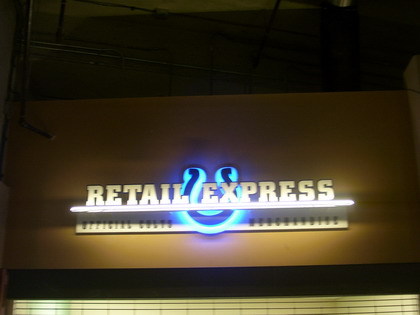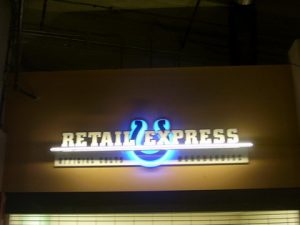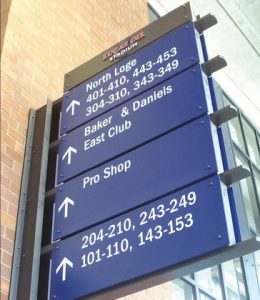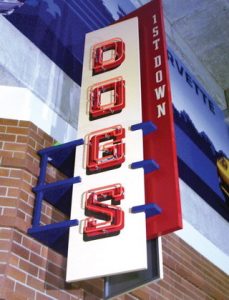When the Baltimore Colts moved to Indianapolis in 1984, the team set up shop inthe Hoosier Dome, later known as the RCA Dome. The team struggled through most of its earlier years in the “Circle City” with the likes of Mark Herrmann, Jack Trudeau and Paul Justin at quarterback. However, the team’s selection of quarterback Peyton Manning and wide receiver Marvin Harrison in the 1998 draft ushered in a new, very successful era that culminated with winning the Lombardi Trophy in Super Bowl XLI.
Although Colts fans remained faithful throughout the team’s waxing and waning fortunes, team officials realized the need to construct a new stadium with more luxury boxes and fan-friendly amenities. The Colts hired HKS Inc. (Dallas) to build the stadium, and Catt Lyon Design + Wayfinding (Cincinnati) designed its environmental graphics.
Hunt Construction, the project’s general contractor, awarded the sign fabrication to Verona, PA-based Bunting Graphics. Initially, the project entailed a $1.9 million signage package, but Bunting earned an additional $1.8 million work order when the team realized Lucas Oil Stadium would require a broader environmental-graphic scope. Liz Gamelier, Bunting’s marketing director, said the project encompassed 3,019 signs.
To produce Lucas Oil Stadium’s directional graphics, Bunting plotter-cut 3M Controltac vinyl on its Summa Inc. DC3 plotter and applied it to cast acrylic. Banners comprise scrim material printed on an HP DesignJet 5500 printer. To fabricate ADA signage, the shop used two methods. For the general-admission tiers, they painted photopolymer sheets with integral Braille symbols and applied custom, cast zinc with chrome-finish logo medallions. On the suite level, Bunting fabricated stainless-steel and glass placards with stainless raster beads and applied vinyl for the graphics.
Advertisement
Illuminated-sign fabrication required two solutions. The gate-ID signs incorporate LEDs to offer an energy-saving, low-maintenance alternative. However, for the team’s retail sign and concession-stand signage, Catt Lyon chose neon because of its warm glow, color range and historic connotation. The channel letters comprise PVC faces and aluminum returns.
“With a project of this scale and complexity, there are 1,000 or more details to manage,” Gamelier said. “To address the number of high-volume projects we fabricate, we’ve created a proprietary software program, Project Controls, which captures and organizes all project documents and correspondence. Our clients appreciate our ability to manage details in a transparent manner.”


 Tip Sheet1 week ago
Tip Sheet1 week ago
 Photo Gallery3 days ago
Photo Gallery3 days ago
 Ask Signs of the Times5 days ago
Ask Signs of the Times5 days ago
 Real Deal2 weeks ago
Real Deal2 weeks ago
 Benchmarks1 week ago
Benchmarks1 week ago
 Paula Fargo14 hours ago
Paula Fargo14 hours ago
 Photo Gallery14 hours ago
Photo Gallery14 hours ago
 Women in Signs2 weeks ago
Women in Signs2 weeks ago













